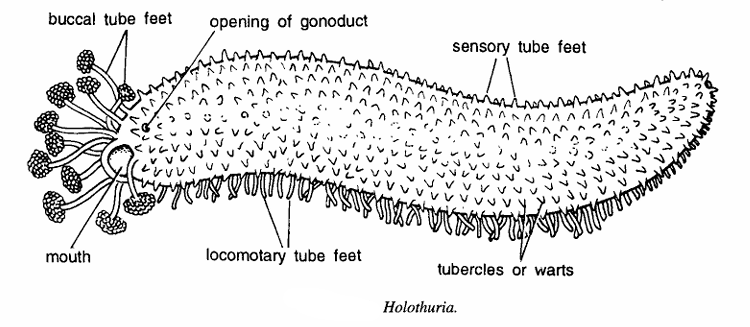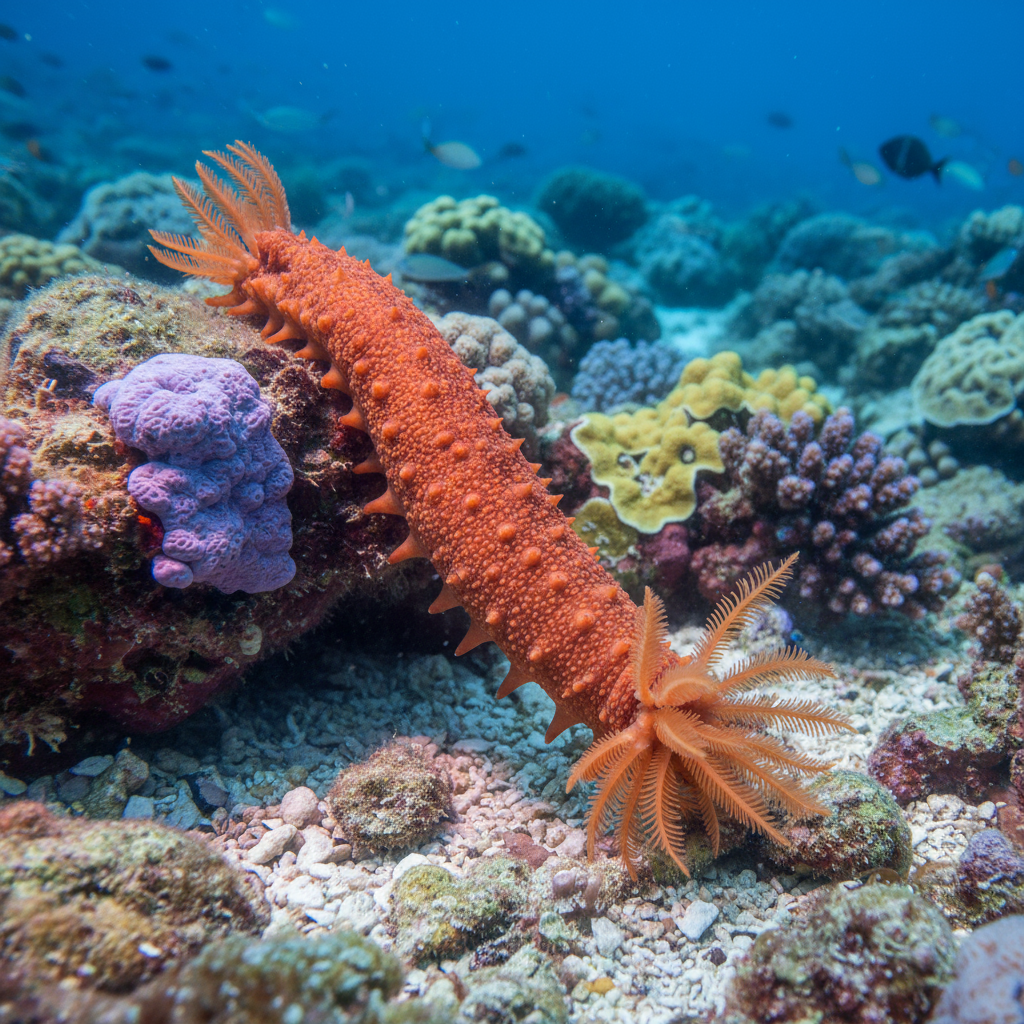Holothuria: Comprehensive Overview of the Sea Cucumber Genus
Holothuria is the type genus of the family Holothuriidae, class Holothuroidea, and one of the most diverse and widespread genera of sea cucumbers in marine ecosystems. Commonly referred to as sea cucumbers, species within this genus have soft, elongated, and cylindrical bodies resembling cucumbers. They are found predominantly in tropical and temperate coastal waters, playing vital roles in sediment bioturbation, nutrient cycling, and as a food source for various marine predators and humans.
Classification of Holothuria
| Taxonomic Rank | Name | Characteristic |
|---|---|---|
| Kingdom | Animalia | Multicellular heterotrophic marine organisms |
| Phylum | Echinodermata | Marine animals with pentaradial symmetry and calcareous ossicles |
| Class | Holothuroidea | Soft-bodied, elongated sea cucumbers with oral tentacles |
| Order | Holothuriida | Sea cucumbers with leathery skin and five rows of tube feet |
| Family | Holothuriidae | Sea cucumbers with complex oral tentacles for feeding |
| Genus | Holothuria | Largest genus of sea cucumbers with diverse morphology and size |

Habitat and Habit
Holothuria species are benthic and mostly inhabit coral reefs, rocky substrates, sandy habitats, and seagrass beds. They range from intertidal zones to deep-water environments. These sea cucumbers are slow-moving and utilize their tube feet to crawl on the seafloor. They are primarily deposit feeders, ingesting sediment to extract organic matter, though some species employ suspension feeding via branched tentacles.
Holothuria is found near seacoasts and is measuring about 30 cm. The animal feeds on microorganisms and moves very slow on the sea bottom by the muscular contractions of the body wall and with the help of its tube feet.
Geographical Distribution
Holothuria has a cosmopolitan distribution, inhabiting tropical and subtropical oceans worldwide. Concentrated primarily in Indo-Pacific coral reefs, they are also found in the Caribbean, Red Sea, and Atlantic regions. Several species are of commercial importance in Asia, harvested for food and traditional medicines.

General Characteristics
- Commonly called as sea cucumber.
- Body is elongated along the oral and aboral axis horizontally.
- Oral end has large mouth surrounded by tactile buccal tentacles for collecting food. Madreporite is internal polian vesicles 1 to many.
- Water vascular system well developed. Tube feet contains suckers and are present in rows.
- Body divided into ambulacral and interambulacral areas.
- Dermo-muscular body wall is embedded with small calcarious ossicles.
- Pedicellariae or spines absent. Respiratory tree and cuviers tubes are present internally.
- Ambulacral grooves are covered and run longitudinally.
- Sexes are separate.
- Development includes Auricularia larva which develops into Doliolaria before metamorphosis into adult.
- Body: Elongated, cylindrical, soft, and covered by a leathery skin embedded with calcareous ossicles.
- Coloration: Highly variable; ranges from brown, black, olive, to bright colors such as orange or red.
- Tentacles: Usually 10–30 branched oral tentacles surround the mouth, specialized for feeding.
- Tube Feet: Arranged in five rows along the body, used for locomotion and substrate attachment.
- Size: Species range from small (few centimeters) to large (over 1 meter in some species).
- Internal Features: Contains a single branched gonad and water vascular system specialized for hydraulic movement.
Special Features
Holothuria species have remarkable regenerative capabilities, including the ability to autotomize internal organs when threatened, followed by regeneration. Their body wall contains unique saponins and bioactive compounds with medicinal potential. The leathery cuticle is reinforced with microscopic ossicles, providing defense and flexibility.
Some species exhibit brooding behavior, internally fertilizing and guarding their offspring, while others broadcast gametes into the water for external fertilization.

Behavior and Ecology
These sea cucumbers are ecosystem engineers—actively processing sediment and organic detritus, contributing to habitat health and nutrient cycling. Their deposit feeding enhances sediment aeration and organic matter decomposition.
Predators include fish, sea stars, and humans. Holothuria species have economic importance, especially in Asia, where they are harvested as seafood (trepang or bêche-de-mer).
Reproductive cycles vary among species but generally include planktonic larval stages after external fertilization, enabling wide dispersal.
References
- https://en.wikipedia.org/wiki/Holothuria
- https://www.sciencedirect.com/topics/biochemistry-genetics-and-molecular-biology/holothuria
- https://en.wikipedia.org/wiki/Sea_cucumber
- https://www.sciencedirect.com/topics/agricultural-and-biological-sciences/holothuria
- https://animaldiversity.org/accounts/Holothuroidea/
- https://www.vliz.be/imisdocs/publications/ocrd/350834.pdf
- https://jifro.ir/article-1-4348-en.pdf
- https://www.britannica.com/animal/holothurian
- https://zookeys.pensoft.net/article/29932/

